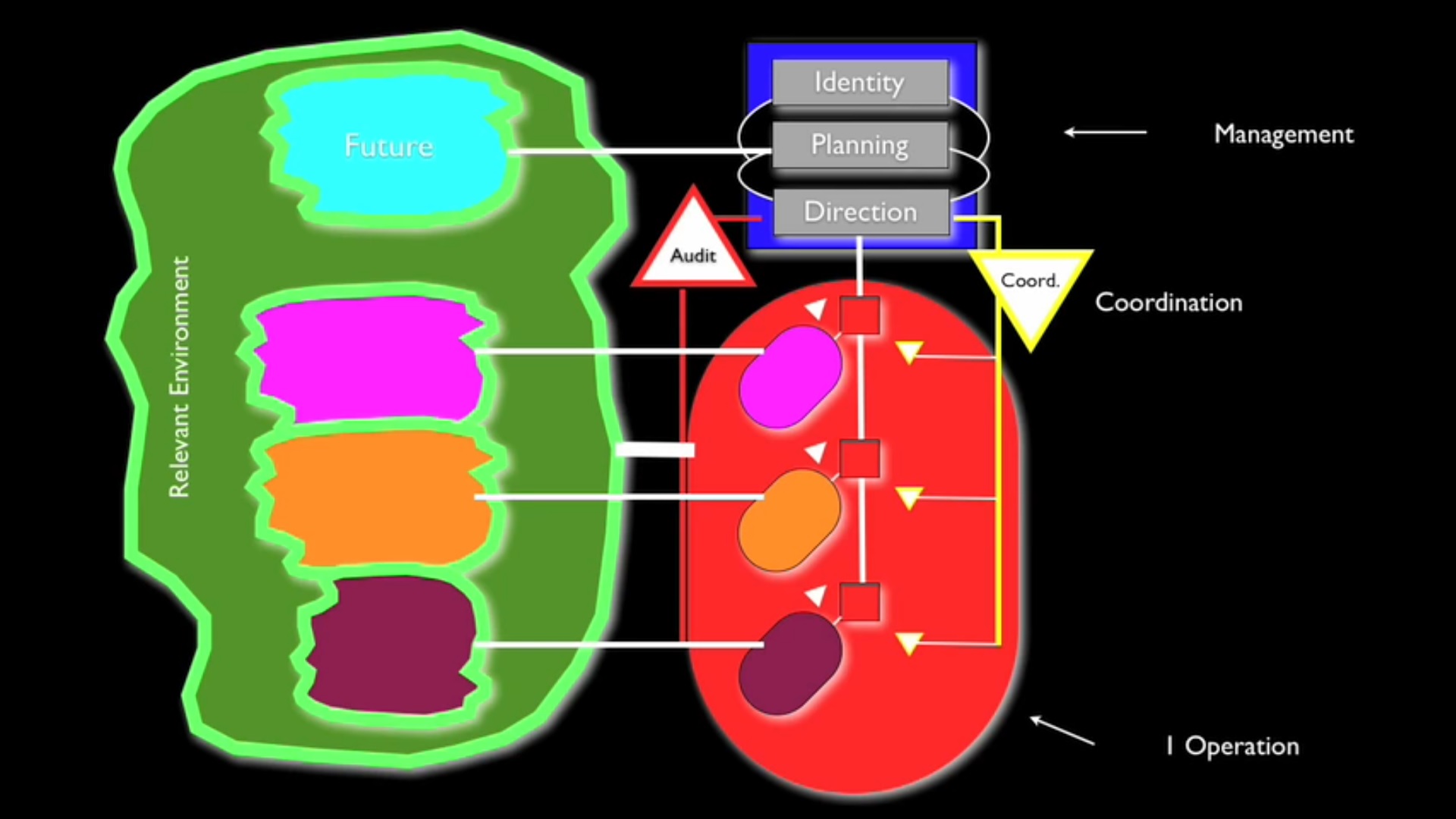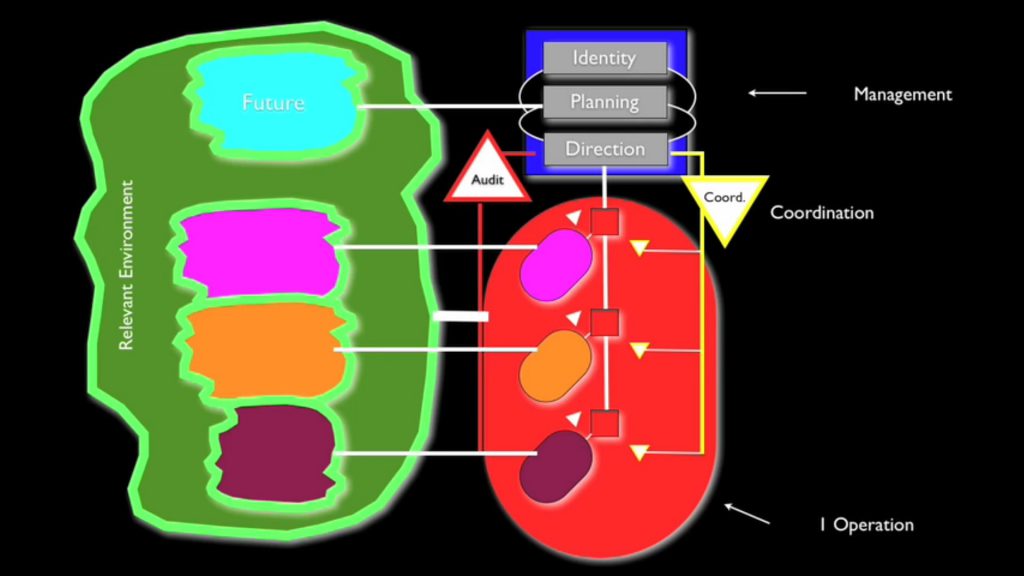Introduction to Viable System Model

Today I would like to talk about something very abstract that is used, in my opinion, as a thinking tool to look at the behaviors within systems, in a more holistic way. Also used in the context of corporate management.
Every viable system contains and is contained in another viable system. The best example of a viable system is a human being, cells, tissues, organs, body are viable systems contained in other viable systems. The human system is the most complex creation in the universe in a marvel of control engineering. Stafford Beer identified six functions of control that are present at every level of recursion and are necessary and sufficient to assure viability. These functions are an operation, coordination, direction, audit, planning and identity.
Stafford Beer puts all these ideas together in the viable system model.
He makes use of both the idea of recursiveness and the fuzzy borders.
Beer’s model has three main elements. These being a system that houses the meta system or management and are contained in their relevant environment, represented in a amoeba shaped area with a fuzzy border.
Viable systems are complex and change constantly. Beers model is a cybernetic solution to the notorious failure of authoritarian and centralized organizations such as the Soviet Union proved to be, as well as other governments and large private enterprises.
Stafford Beer puts all these ideas together in the viable system model.
He makes use of both the idea of recursiveness and the fuzzy borders.
Beer’s model has three main elements. These being a system that houses the meta system or management and are contained in their relevant environment, represented in a amoeba shaped area with a fuzzy border.
Viable systems are complex and change constantly. Beers model is a cybernetic solution to the notorious failure of authoritarian and centralized organizations such as the Soviet Union proved to be, as well as other governments and large private enterprises.
Stafford Beer puts all these ideas together in the viable system model.
He makes use of both the idea of recursiveness and the fuzzy borders.
Beer’s model has three main elements. These being a system that houses the meta system or management and are contained in their relevant environment, represented in a amoeba shaped area with a fuzzy border.
Viable systems are complex and change constantly. Beers model is a cybernetic solution to the notorious failure of authoritarian and centralized organizations such as the Soviet Union proved to be, as well as other governments and large private enterprises.
Stafford Beer puts all these ideas together in the viable system model.
He makes use of both the idea of recursiveness and the fuzzy borders.
Beer’s model has three main elements. These being a system that houses the meta system or management and are contained in their relevant environment, represented in a amoeba shaped area with a fuzzy border.
Viable systems are complex and change constantly. Beers model is a cybernetic solution to the notorious failure of authoritarian and centralized organizations such as the Soviet Union proved to be, as well as other governments and large private enterprises.

Beer’s viable system model integrates many cybernetic concepts at the same time. According to Beer, 6 systems or functions are necessary and sufficient to acquire viability because they allow living organisms to control the flow of materials, energy and information that is coming from the environment. Only two recursion levels are need to make maps and navigate recursively upwards or downwards within any viable system, regardless of size until we are down to the smallest of operations or the simplest of processes.
Every line or communication channel shown in the graphics expression of the model represents an almost static circuit that is subject to Ashby’s law of requisie variety which apples to all control systems.